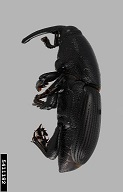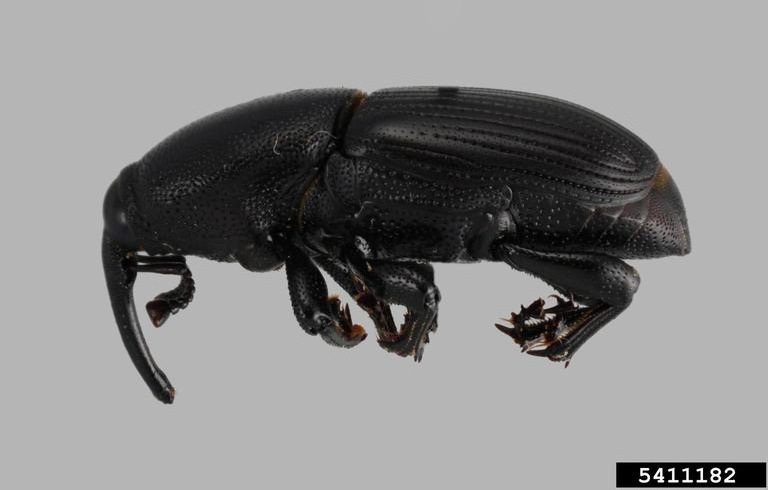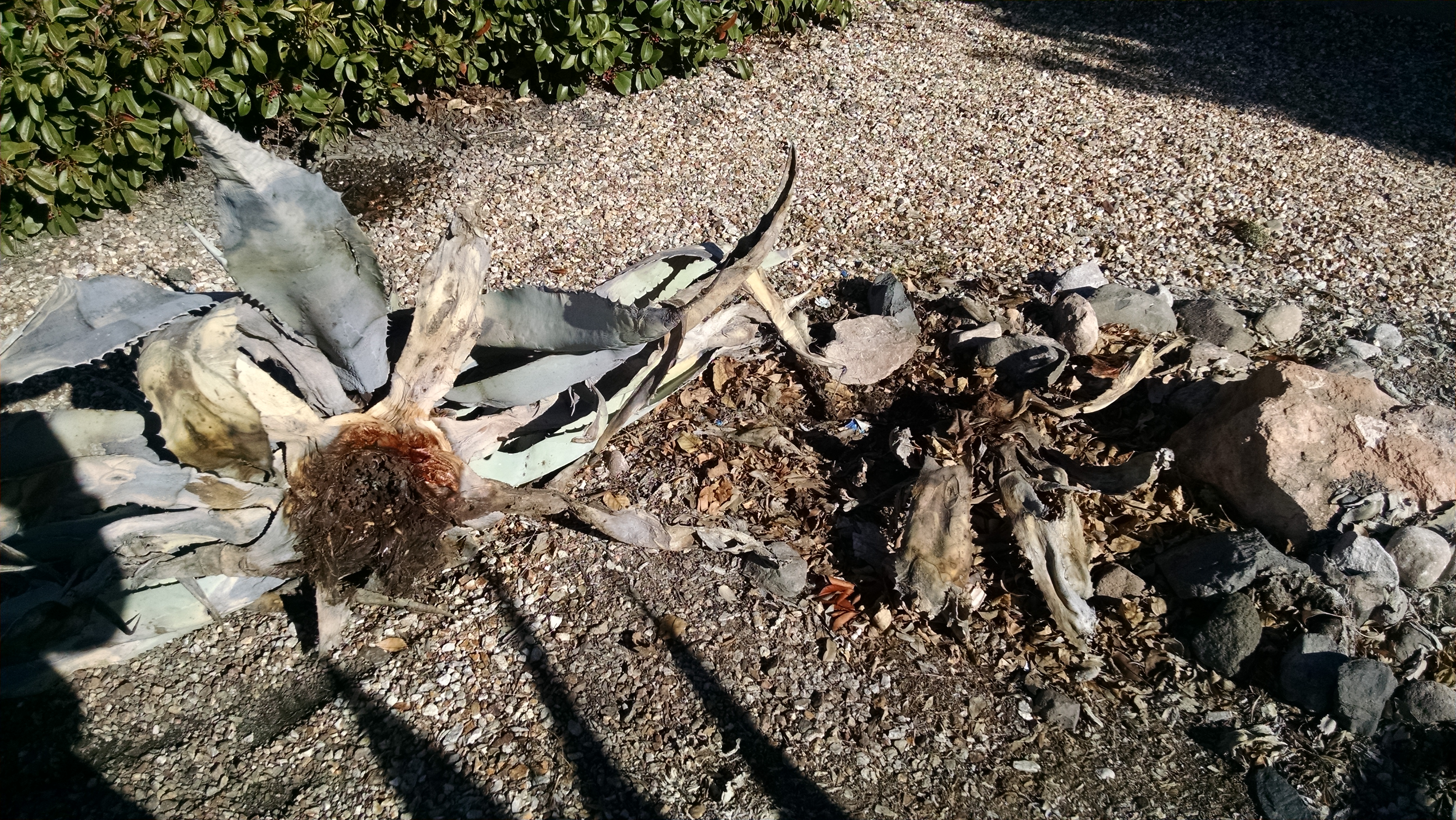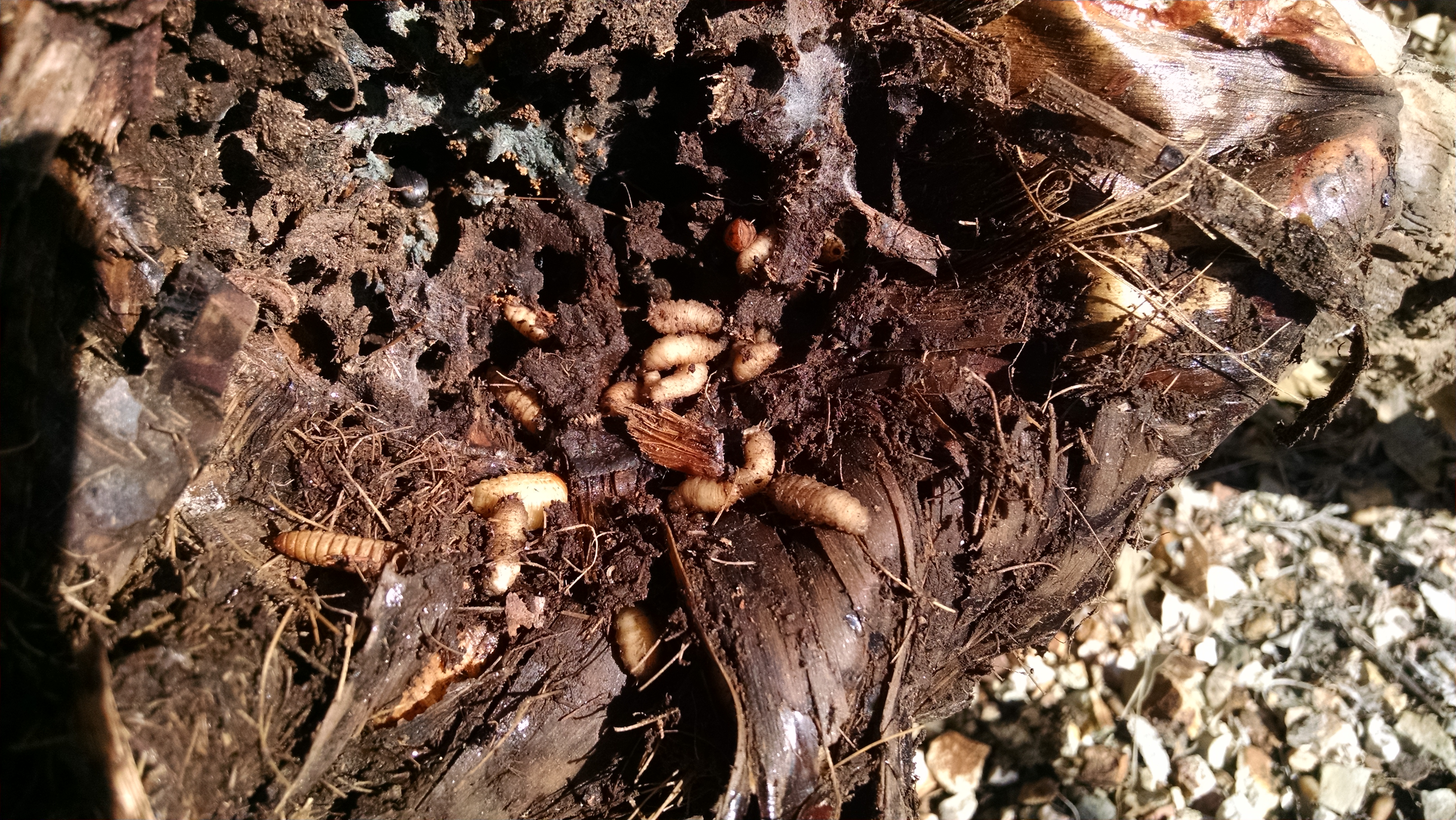 Agave Snout Weevils - February 3, 2016 Jeff Schalau, Agent, Agriculture & Natural Resources University of Arizona Cooperative Extension, Yavapai County Agaves are beautiful ornamental plants which are often used to accent xeriscape gardens. For the most part, they do not have serious pest problems, but the agave snout weevil (Scyphophorus acupunctatus) is present in areas where native populations of agaves are found – this includes the temperate areas of Arizona. If you have cultivated agaves, be vigilant for the signs of the agave snout weevil. This edition discusses their host plant preferences, symptoms, and potential treatments. I was in Cottonwood recently and saw a couple of dead and dying century plants (Agave americana) in a restaurant parking lot. Upon further investigation, I kicked at one of the dead plants, loosened the crown, pulled the top away from the dead root crown and discovered hundreds of agave snout weevil larvae and pupae. I was inspired. So I took some photos and knew I had a relevant topic to share with readers. The agave snout weevil also known as the sisal weevil, feeds on many species of agave and can be especially damaging to the larger species such as century plant. The century plant and its cultivars have been widely used in the residential and commercial landscape industry. The agave snout weevil will also feed on other agave species including our small native agave species. The agave snout weevil is also a serious pest where blue agave is grown commercially for tequila and in foreign countries where agaves have been introduced as landscape plants. A similar species also colonizes yucca plants and is also present across much of Arizona (Scyphophorus yuccae). Agave snout weevils are beetles about 6/10 inch (15 mm) in length, brownish-black and have a dull body. Being a weevil, it has a protruding snout and chewing mouthparts. The adult female enters the base of the plant to lay eggs in the spring. These eggs hatch into larvae (grubs) that feed on the succulent core of the plant. The weevil’s damage is significant, but the weevil opens the plant to decay microbes which enter the plant causing it to die and collapse from the base upward. The larvae have chewing mouthparts and develop in the dying plant, pupate, and often infect other agaves nearby. These symptoms are almost always associated with infestations by the agave weevil, and it is currently thought that this disease would not develop if not for the weevil damage. I would not be surprised if further investigation revealed that weevils purposely harbor and introduce the pathogens to expedite the decay process making the agave easier to colonize and feed upon by snout weevils. Control of the agave snout weevil is difficult. Selecting species that are less susceptible and typically smaller than the century plant is helpful, especially in areas where the problem has occurred previously. Minor infestations can be controlled by removing and discarding the affected plants. With rare or special specimens, chemical prevention using a broad-spectrum insecticide applied to the soil at the base of the agave plants in spring would also be effective in controlling agave snout weevil populations. Diazinon granules were once used to control agave snout weevils, but it is no longer available to home gardeners. Imidacloprid or cyhalothrin granules are a suitable replacement for Diazinon when soil applied insecticides are deemed necessary. If the situation I described above (with hundreds of larvae were present) were on my property, I would try using a “least-toxic” contact insecticide such as insecticidal soap or spinosad to kill the larvae before they could colonize adjacent agaves. I would also consider replacing Agave americana with smaller, cold hardy agave species such as A. parryi or A. harvardiana which should be less attractive to the agave snout weevil. If I were an Agave collector, I would also consider spring applications of the above mentioned insecticides to protect valuable and/or rare specimens, but only after trying least toxic treatments first. I would imagine that native birds (roadrunners, quail, jays, etc.), domestic poultry and other insectivorous animals would be interested in eating agave snout weevil larvae and pupae. An infested plant would need to be broken open to expose the immature weevils, but I bet some hungry critter would be interested in eating this concentrated food source. I have included photos of the dead agave, agave snout weevil larvae and pupae, and additional resources below. Follow the Backyard Gardener on Twitter – use the link on the BYG website. If you have other gardening questions, call the Master Gardener help line in the Camp Verde office at 928-554-8992 or e-mail us at verdevalleymg@gmail.com and be sure to include your name, address and phone number. Find past Backyard Gardener columns or provide feedback at the Backyard Gardener web site: http://cals.arizona.edu/yavapai/anr/hort/byg/. Photos  Adult agave snout weevil, Scyphophorus acupunctatus, (Jennifer C. Giron Duque, University of Puerto Rico, Bugwood.org).  Dead Agave americana colonized by agave snout weevils, S. acupunctatus, in Cottonwood, AZ (Jeff Schalau, University of Arizona Cooperative Extension).  Closeup of dead Agave americana showing larvae and pupae of agave snout weevils, S. acupunctatus, in Cottonwood, AZ. Larvae are rounder and lighter colored. Pupae are darker and longer with distinct horizontal bands (Jeff Schalau, University of Arizona Cooperative Extension). Additional Resources Problems and Pests of Agave, Aloe, Cactus and Yucca University of Arizona Cooperative Extension extension.arizona.edu/pubs/az1399.pdf |